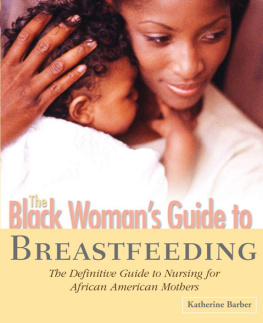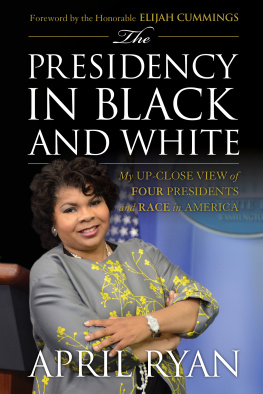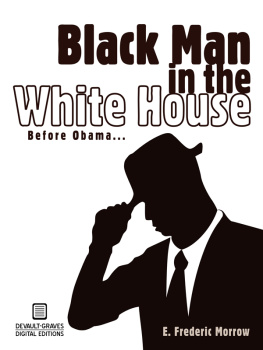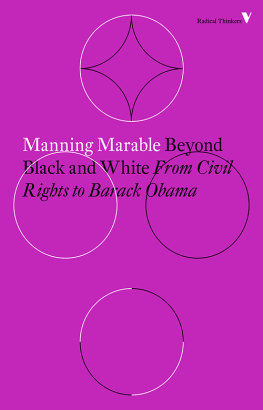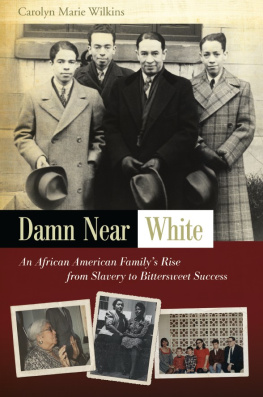Bay - The White Image in the Black Mind: African-American Ideas about White People, 1830-1925
Here you can read online Bay - The White Image in the Black Mind: African-American Ideas about White People, 1830-1925 full text of the book (entire story) in english for free. Download pdf and epub, get meaning, cover and reviews about this ebook. City: New York, year: 2000, publisher: Oxford University Press USA - OSO, genre: Politics. Description of the work, (preface) as well as reviews are available. Best literature library LitArk.com created for fans of good reading and offers a wide selection of genres:
Romance novel
Science fiction
Adventure
Detective
Science
History
Home and family
Prose
Art
Politics
Computer
Non-fiction
Religion
Business
Children
Humor
Choose a favorite category and find really read worthwhile books. Enjoy immersion in the world of imagination, feel the emotions of the characters or learn something new for yourself, make an fascinating discovery.

The White Image in the Black Mind: African-American Ideas about White People, 1830-1925: summary, description and annotation
We offer to read an annotation, description, summary or preface (depends on what the author of the book "The White Image in the Black Mind: African-American Ideas about White People, 1830-1925" wrote himself). If you haven't found the necessary information about the book — write in the comments, we will try to find it.
Bay: author's other books
Who wrote The White Image in the Black Mind: African-American Ideas about White People, 1830-1925? Find out the surname, the name of the author of the book and a list of all author's works by series.
The White Image in the Black Mind: African-American Ideas about White People, 1830-1925 — read online for free the complete book (whole text) full work
Below is the text of the book, divided by pages. System saving the place of the last page read, allows you to conveniently read the book "The White Image in the Black Mind: African-American Ideas about White People, 1830-1925" online for free, without having to search again every time where you left off. Put a bookmark, and you can go to the page where you finished reading at any time.
Font size:
Interval:
Bookmark:
THE WHITE IMAGE IN THE BLACK MIND
IN THE BLACK MIND
African-American Ideas about
White People, 18301925
MIA BAY

Oxford University Press
Oxford New York
Athens Auckland Bangkok Bogot Buenos Aires Calcutta
Cape Town Chennai Dar es Salaam Delhi Florence Hong Kong Istanbul
Karachi Kuala Lumpur Madrid Melbourne Mexico City Mumbai
Nairobi Paris So Paulo Singapore Taipei Tokyo Toronto Warsaw
and associated companies in
Berlin Ibadan
Copyright 2000 by Mia Elisabeth Bay
Published by Oxford University Press, Inc.
198 Madison Avenue, New York, New York 10016
Oxford is a registered trademark of Oxford University Press.
All rights reserved. No part of this publication may be reproduced,
stored in a retrieval system, or transmitted, in any form or by any means,
electronic, mechanical, photocopying, recording, or otherwise,
without the prior permission of Oxford University Press.
Library of Congress Cataloging-in-Publication Data
Bay, Mia.
The white image in the black mind: African-American ideas about
white people, 18301925 / Mia Bay.
p. cm.
Includes bibliographical references and index.
ISBN 0-19-510045-X; ISBN 0-19-513279-3 (pbk.)
1. United StatesRace relations. 2. Afro-AmericansAttitudes
History19th century. 3. Afro-AmericansAttitudesHistory
20th century. 4. Afro-AmericansIntellectual life. 5. Race
awarenessUnited StatesHistory19th century. 6. Race
awarenessUnited StatesHistory20th century. 7. Whites
United States. 8. Whites in literature. I. Title.
E185.61.B29 1999
305.8'00973dc21 98-48935
135798642
Printed in the United States of America
on acid-free paper
This book had been a long time coming and has incurred many debts along the way. Friends and colleagues whose ideas and support have nourished this project go all the way back to my undergraduate days at University of Toronto, where Michael Wayne and John Ingham introduced me the study of African-American history, and Barrie Hayne supervised me in a senior essay that explored some of the themes covered in this book.
At Yale University, where this project began to take its final shape, I had the good fortune to be advised by David Brion Davis, whose support and encouragement helped me complete both my dissertation and its reincarnation as this book. Other Yale friends whose discussions and critical readings shaped this work include Jean Christophe Agnew, Jonathan Cedarbaum, Debbie Elkin, Jonathan Holloway, David Goldshalk, Stephanie Smallwood, Carol Sherriff, Ann Standley, Beth Wenger, and above all, Barbara Savagea tremendously willing and generous reader from graduate school to the present day.
Since graduate school, more people than I could name here have aided me in thinking through the ideas explored here. Most notable have been my friends and colleagues at Rutgers, whose confidence in my work has often exceeded my own. In particular, I want to thank Bonnie Smith and the other members of the fabulous gender group for their comments on several chapters; Tom Slaughter, Paul Clemens, David Levering Lewis, and Rudy Bell for careful readings of the entire manuscript; Jennie Brier, Justin Hart, and Amina Pilgrim for superb research assistance; and Matt Matsuda, Carmen Whalen and Carolyn Brown for always cheering me on. In addition, I have to give special thanks to Beryl Satter. My best editor and a rock-steady friend, Beryl helped me survive this book. Likewise, Deborah Gray White has been a crucial friend, reader, and mentor throughout this project. In addition to lots of help and advice, Deborah, along with her daughters Asha and Maya, provided me with a warm and welcoming New Jersey home away from home during some of the late night hysteria that went into this book.
New colleagues, but old friends, Jennifer Morgan and Herman Bennett have been equally important to this work. In matters both intellectual and day-to-day, they supported me through every step of the book writing process while also hooking me up with other wonderful supportive friends, most especially Ms. Lisa Waller.
This book has also benefited from the generosity of a wide variety of scholars and institutions elsewhere. Many thanks to David Roediger, who has been instructive both in his own work and in his generous comments on mine. I am grateful to George Fredrickson not only for his reading of my manuscript but for tolerating my transposition of the title of his classic book, The Black Image in the White Mind: The Debate on Afro-American Character and Destiny, 18171914. My work owes an obvious debt to his. Other critics and readers of my work include Suzanne Lebsock, Thomas Trautman, Walter Johnson, Kathy Tanner, Martin Summers, and the fellows at Harvard Universitys Charles Warren Center, where I held a postdoctoral fellow in 19941995. Particularly helpful there were Laura Kalman, Steve Nissenbaum, Steve Biel, and the centers wonderful administrator Susan Hunt.
In addition to the Warren Center fellowship, this work has also been facilitated by a grant from the Provosts Office at Rutgers University and a J. Franklin Jameson Fellowship from the American Historical Association and the Library of Congress.
The research that went into this book could not have been completed without the aid from a large number of librarians and archivists. I am particularly indebted to the staffs of the manuscripts division of the Library of Congress and Boston Public Librarys Rare Book Room, as well as the research librarians at Yale Universitys Sterling Memorial Library, the Harvard University Libraries, Howard Universitys Moorland-Springarn Research Center, and New York Public Librarys Schomburg Center. Many thanks to Pamela Grieff of the Boston Atheneuem for her efficiency in helping me acquire a number of the pictures included in this book.
Friends and relatives have sustained and encouraged this project throughout. Among them are Laura Fuerstein, Kathryn OHara, Rose Stewart, Bill Moses, Elisabeth Abrams, Laura Saltz, Jude Lovrin, the late, much-loved John DAmico, and my cousin Dauna Williams. Finally, let me thank my family, especially my parents. My father, Christian Bay, did not live to see this project completed. But his advice, encouragement, and love still sustained me throughout. And my mother, Juanita Bay, remains a constant source of support and inspiration.
New York, New York M.B.
July 1999
One
Of One Blood God Created All the Nations of Men:
African-Americans Respond to the
Rise of Ideological Racism, 17891830
Two
The Redeemer Race and the Angry Saxon:
Race, Gender, and White People in
Antebellum Black Ethnology
Three
What Shall We Do with the White People?:
Whites in Postbellum Black Thought
Four
Us Is Human Flesh:
Race and Humanity in Black Folk Thought
Five
Devils and Good People Walking de Road at de Same Time:
White People in Black Folk Thought
III: NEW NEGROES, NEW WHITES: BLACK RACIAL
THOUGHT IN THE TWENTIETH CENTURY
Six
A New Negro for a New Century:
Black Racial Ideology, 19001925
THE WHITE IMAGE IN THE BLACK MIND
When Olaudah Equiano, an African who was captured and shipped to the New World in 1756, first saw the slave ship and its white crew, he fainted in fright. He was convinced that he and the other blacks he saw chained aboard the vessel would be eaten by these white men with horrible looks, red faces, and long hair. No assurances from African slave merchants assisting with the loading of the slaver could convince Equiano or the rest of the ships human cargo that they would not ultimately be consumed by these ugly men.
Next pageFont size:
Interval:
Bookmark:
Similar books «The White Image in the Black Mind: African-American Ideas about White People, 1830-1925»
Look at similar books to The White Image in the Black Mind: African-American Ideas about White People, 1830-1925. We have selected literature similar in name and meaning in the hope of providing readers with more options to find new, interesting, not yet read works.
Discussion, reviews of the book The White Image in the Black Mind: African-American Ideas about White People, 1830-1925 and just readers' own opinions. Leave your comments, write what you think about the work, its meaning or the main characters. Specify what exactly you liked and what you didn't like, and why you think so.


